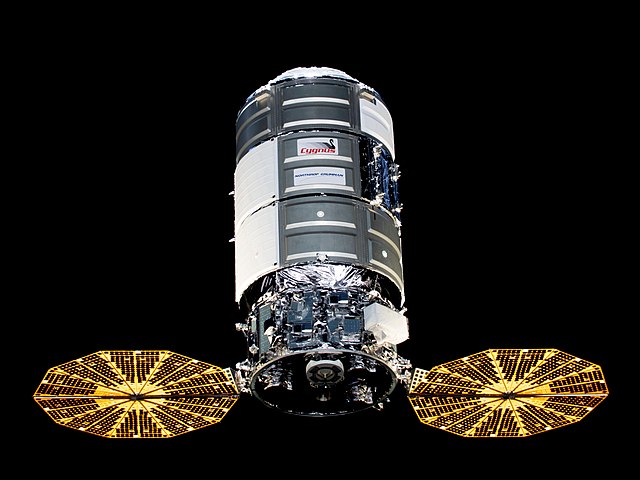Orbital-D1, also known as Orb-D1, and Cygnus 1, was the first flight of the Cygnus cargo spacecraft developed by Orbital Sciences Corporation. It was named after the late NASA astronaut and Orbital Sciences executive G. David Low. The flight was carried out by Orbital Sciences under contract to NASA as Cygnus' demonstration mission in the Commercial Orbital Transportation Services (COTS) program. The mission launched on 18 September 2013 at 14:58:02 UTC. Cygnus was the seventh type of spacecraft to visit the International Space Station (ISS), after the crewed Soyuz and Space Shuttle, and uncrewed Progress, ATV, HTV and Dragon 1.
Canadarm2 grapples the S.S. G. David Low
Launch of Orb-D1
Cygnus approaching the ISS
Cygnus docked to the ISS
Cygnus is an expendable American cargo spacecraft developed by Orbital Sciences Corporation but manufactured and launched by Northrop Grumman Space Systems as part of NASA's Commercial Resupply Services (CRS) program. It is usually launched by Northrop Grumman's Antares rocket from the Wallops Flight Facility, although three flights were on ULA's Atlas V and three are planned for SpaceX's Falcon 9, in both cases launching from Cape Canaveral Space Force Station. It transports supplies to the International Space Station (ISS) following the retirement of the American Space Shuttle. Since August 2000, ISS resupply missions have been regularly flown by the Russian Progress spacecraft, as well as by the European Automated Transfer Vehicle, and the Japanese H-II Transfer Vehicle. With the Cygnus spacecraft and the SpaceX Dragon, NASA seeks to increase its partnerships with domestic commercial aviation and aeronautics industry.

Cygnus spacecraft approaching the International Space Station for the NG-12 mission
The NASA Administrator Charles Bolden (third from left) in front of the Cygnus spacecraft in May 2012.
The Standard Cygnus being unberthed from the Harmony module.







